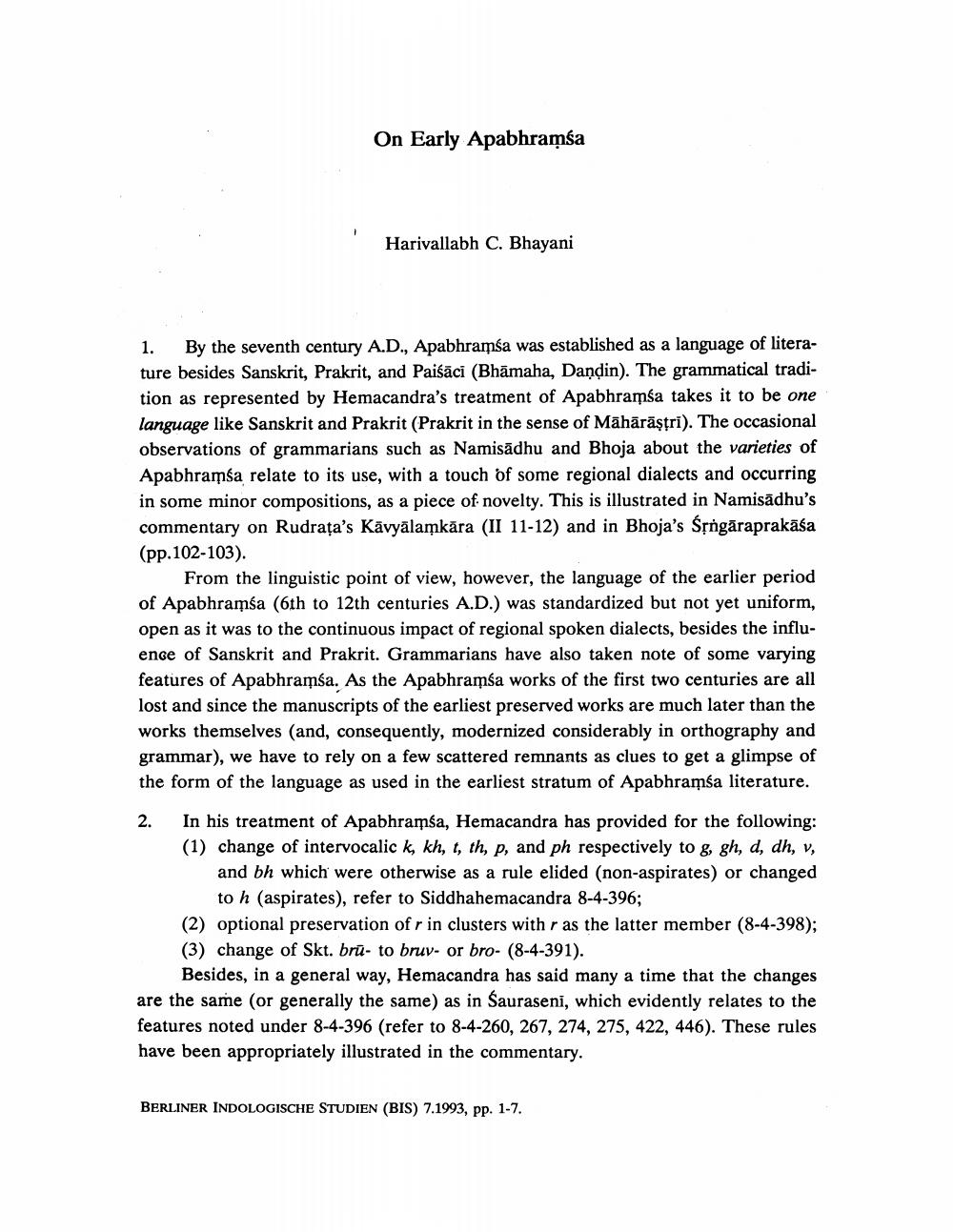Book Title: On Early Apbhramsa Author(s): H C Bhayani Publisher: H C Bhayani View full book textPage 1
________________ On Early Apabhramsa Harivallabh C. Bhayani 1. By the seventh century A.D., Apabhramsa was established as a language of literature besides Sanskrit, Prakrit, and Paisaci (Bhamaha, Dandin). The grammatical tradition as represented by Hemacandra's treatment of Apabhramsa takes it to be one language like Sanskrit and Prakrit (Prakrit in the sense of Māhārāṣṭri). The occasional observations of grammarians such as Namisädhu and Bhoja about the varieties of Apabhramsa relate to its use, with a touch of some regional dialects and occurring in some minor compositions, as a piece of novelty. This is illustrated in Namisādhu's commentary on Rudrata's Kävyälamkära (II 11-12) and in Bhoja's Śrngaraprakasa (pp.102-103). From the linguistic point of view, however, the language of the earlier period of Apabhramsa (6th to 12th centuries A.D.) was standardized but not yet uniform, open as it was to the continuous impact of regional spoken dialects, besides the influence of Sanskrit and Prakrit. Grammarians have also taken note of some varying features of Apabhramsa. As the Apabhramsa works of the first two centuries are all lost and since the manuscripts of the earliest preserved works are much later than the works themselves (and, consequently, modernized considerably in orthography and grammar), we have to rely on a few scattered remnants as clues to get a glimpse of the form of the language as used in the earliest stratum of Apabhramsa literature. 2. In his treatment of Apabhramsa, Hemacandra has provided for the following: (1) change of intervocalick, kh, t, th, p, and ph respectively to g, gh, d, dh, v, and bh which were otherwise as a rule elided (non-aspirates) or changed to h (aspirates), refer to Siddhahemacandra 8-4-396; (2) optional preservation of r in clusters with r as the latter member (8-4-398); (3) change of Skt. bra- to bruv- or bro- (8-4-391). Besides, in a general way, Hemacandra has said many a time that the changes are the same (or generally the same) as in Sauraseni, which evidently relates to the features noted under 8-4-396 (refer to 8-4-260, 267, 274, 275, 422, 446). These rules have been appropriately illustrated in the commentary. BERLINER INDOLOGISCHE STUDIEN (BIS) 7.1993, pp. 1-7.Page Navigation
1 2 3 4 5 6 7
